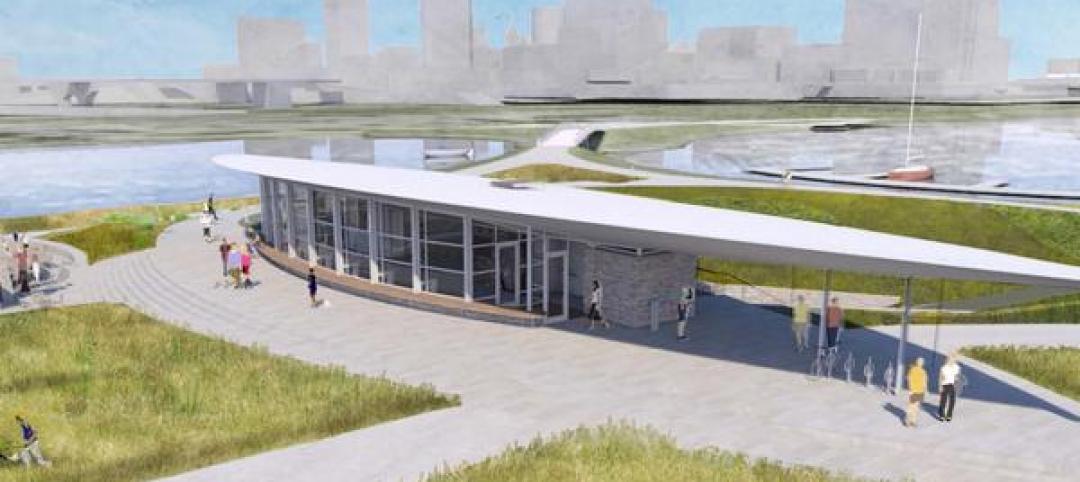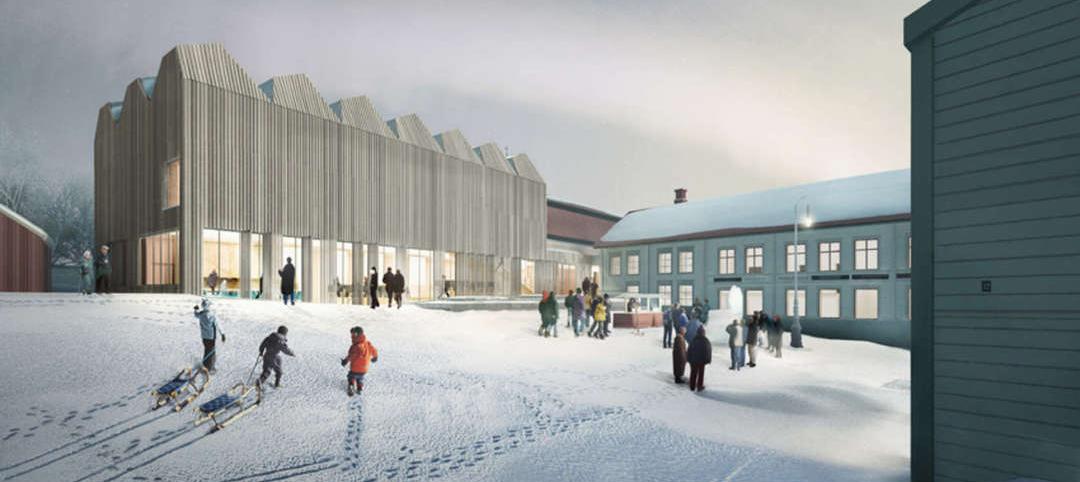The unique relationship between the people of Thailand and elephants dates back at least three centuries. Elephants were used in war and peace, and in rural villages were domesticated to the point where the beasts lived under the same roofs as humans, with their respective lives virtually inextricable.
Deforestation devastated that bond between elephants and the Kui people in northeast Thailand’s Surin Province, depriving both of food and medicinal plants. The province also incurred severe droughts. These events displaced the Kui and elephants to surrounding towns, begging for food or working in elephant camps.
Last month, as part of the government’s “Elephant World” plan that seeks a safe and prosperous reuniting of the Kui and elephants within their homeland, the Surin Provincial Administration Organization completed its Elephant Museum, which sits on a 5,400-sm site and used 480,000 handmade clay bricks in its construction.
Bangkok Project Studio, the museum’s architect, has incorporated handmade bricks for projects before, including the eight-meter-tall walls of the Kantana Film and Animation Institute, which opened in Nakhom Pathom, Thailand, in 2011; and more recently the Elephant Stadium pavilion at Elephant World in Surin, Thailand, completed in 2015.

The complex's curved walls provide visitors with different perspectives, depending on the time of day.
A MESSAGE OF HOPE

Visitors can move freely from one exhibit space to another through entries within the walls.

The Elephant Museum, built by Rattanachart Construction, Ltd., is divided into four sections. The first includes a reception area, exhibition room, library, seminar room, and shops for coffee and gifts. The other three sections feature exhibition spaces that touch on the relationship between the Thai people and elephants; the deforestation that places the elephants’ survival at risk; and a message of empowerment, where visitors can take pride in their culture.

The museum divides into four sections.
More than 200 elephants live in Surin Province, and the museum’s exhibits reiterate its people’s disapproval of animal cruelty and exploitation, while projecting hope for the future.
The museum, which was completed last month, is within a complex of buildings that includes a play area for elephants, a research center, and educational facilities. Visitors can circulate from one space to another through openings in arched walls. Indoor and outdoor areas allow for a variety of programming.

The museum includes a play area for elephants.
Related Stories
Green | Apr 22, 2015
AIA Committee on the Environment recognizes Top 10 Green Projects
Seattle's Bullitt Center and the University Center at The New School are among AIA's top 10 green buildings for 2015.
Cultural Facilities | Apr 20, 2015
Jean Nouvel loses court battle against Philharmonie de Paris over alleged design ‘sabotage’
Nouvel boycotted the January opening of the facility and asked for his name to be removed from all references to the work.
Cultural Facilities | Apr 16, 2015
Milwaukee’s Lakeshore State Park visitor center will be ‘off the grid’
The plans also include a built-in wastewater treatment system and rainwater collection.
Museums | Apr 10, 2015
Henning Larsen Architects designs timber museum extension in Sweden
The new extension will complement Österund’s wooded surroundings
Building Team Awards | Apr 9, 2015
9/11 museum triumphs over controversy
The Building Team for this highly visible project had much more than design, engineering, and construction problems to deal with.
Cultural Facilities | Apr 7, 2015
Mies’ Martin Luther King Jr. Library to get makeover
The architects say the modernization aims to improve “Mies in a contemporary Miesian way.”
Cultural Facilities | Apr 6, 2015
Berkeley’s West Branch Library generates more energy than it uses
The 9,400-sf facility is California's first Net Zero Energy-certified building.
Cultural Facilities | Mar 31, 2015
Pratt Institute to offer first-ever degree in placemaking
As part of its new Urban Placemaking and Management degree, Pratt will offer courses on topics such as "the history and theory of public space" and the "economics of place."
Structural Materials | Mar 30, 2015
12 projects earn structural steel industry's top building award
Calatrava's soaring Innovation Science and Technology Building at Florida Polytechnic University is among the 12 projects honored by the American Institute of Steel Construction in the 2015 IDEAS² awards competition.
Cultural Facilities | Mar 30, 2015
Designs released for new entertainment center in Lubbock, Texas
Amenities of the facility include a performance venue that seats 2,220, a smaller one that seats 425, a 6,000-sf multipurpose room, and a bistro café.
















